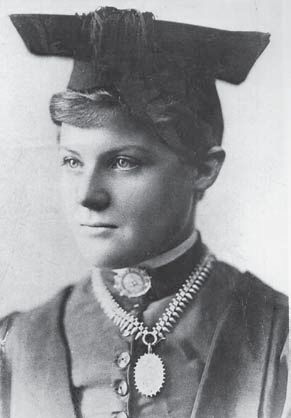Dagmar Berne facts for kids
Georgina Dagmar Berne was an Australian doctor. She was the very first female student to study medicine in Australia. She was born on November 16, 1866, and passed away on August 22, 1900.
Early Life and Education
Dagmar Berne was born in Bega, New South Wales in 1866. She was the oldest of eight children. Her father, who came from Denmark, sadly drowned trying to save another man in the Bega River. Later, her mother's second husband also passed away. This led the family to move to Sydney.
Dagmar's mother, Georgina Kenyon, wanted all her children to get a good education. Dagmar went to Springfield Ladies' College in Potts Point. However, she wasn't happy with the subjects taught there. These included things like needlework, manners, and dancing. Dagmar convinced her mother to arrange private lessons. At seventeen, she left school to study chemistry on her own.
The next year, Dagmar took the university entrance exams. She thought she had failed them. So, she decided to open a private school for girls with her younger sister, Florence. They found a place in Tempe, prepared lessons, and met with families. Just days before the school was set to open, Dagmar got surprising news. She had passed the exams and was accepted into the University of Sydney! Florence went ahead with the school alone. She taught six students, including two of their younger sisters.
Starting a Medical Career
Dagmar started at the university in 1885. She first studied arts. But in 1886, she switched to medicine when a spot opened up. She became one of fifteen students in the third group to study medicine there.
Dagmar Berne was the first woman to study medicine in Australia. This happened despite some protests from the Dean of Medicine, Professor Anderson Stuart. Some senior staff at the university questioned letting female students in. But they accepted it publicly. Dagmar did very well in her first year of medicine. She earned high marks in anatomy, botany, chemistry, and zoology. This was a great academic result.
However, her second year of study was under Professor Stuart. She did not get the same high marks. In fact, she didn't pass another exam. Some people believe Professor Stuart might have deliberately failed her. They think he didn't want a woman to graduate in medicine because of his own biases. They point out that some male students with lower first-year marks still passed later years. Others suggest that Dagmar struggled to keep up. This might have been because she didn't have much science education before university.
In 1888, a famous English doctor named Elizabeth Garrett Anderson visited Australia. She was the second woman in the world to become a registered doctor. Dagmar met her during her visit. Dagmar told her about her struggles studying medicine in Australia. Garrett Anderson shared her own similar experience. She hadn't been allowed to finish her studies in England. Instead, she finished her education at the University of Paris.
Inspired by Garrett Anderson, Dagmar and her mother sought help. They spoke to the Vice-Chancellor of the university, Sir Henry McLaurin. But he refused to help her get her degree. He stated that no woman would graduate in medicine while he was Vice-Chancellor.
Dagmar decided to leave Australia. She sailed for England with her sister Florence. Florence decided to stop teaching and also study medicine. The sisters had inherited some money. This allowed them to live in London. Their mother had told them to keep most of their money safely in Australia. So, they lived on a modest budget. Dagmar joined the Royal Free Hospital, a teaching hospital, in 1889.
She took exams in 1891 and passed with excellent marks in anatomy and physiology. She then continued her final studies at the University of London. Florence also joined the university after passing her entrance exam. While successful, Dagmar often got sick with pneumonia and pleurisy. This was due to her simple living conditions. She decided to return to Sydney after finishing her education and gaining some experience.
During Dagmar's last year of study, Australia faced an economic downturn. This caused her family to lose all their savings. Dagmar and Florence also lost their inheritances. Their other siblings had to work to support the family. Their brother Frederick even had to quit school. The sisters could no longer afford to study. So, Florence secretly took a job as a governess using her teaching experience. Dagmar protested this sacrifice. But she eventually completed her education, graduating in 1893. She earned the Triple Qualification. This was a special diploma from three Scottish medical colleges. She was one of eighteen Australian women licensed to practice in Scotland in the 1800s.
After graduating, Dagmar worked at a hospital in London. She was a resident in Tottenham. She then returned to Australia in 1895. On January 9, 1895, Dagmar registered to practice as a doctor in New South Wales. She opened her own practice in Macquarie Street, Sydney that same year. Her sister Eugenie came to live with her. Eugenie encouraged her to get tested because Dagmar was still having health problems.
Later Life and Death
Dagmar was diagnosed with tuberculosis. She moved to the country town of Trundle. She stayed with family friends there. She hoped the drier climate would help her health. She continued to practice medicine in Trundle until she passed away in 1900.
Legacy
After Dagmar's death, her mother created the Dagmar Berne Prize. This prize is given every year. It goes to the final-year medical student at the University of Sydney with the highest marks.
Dagmar Berne is buried in Waverley Cemetery in Waverley, Sydney. In 2001, Dagmar Berne was added to the Victorian Honour Roll of Women.


